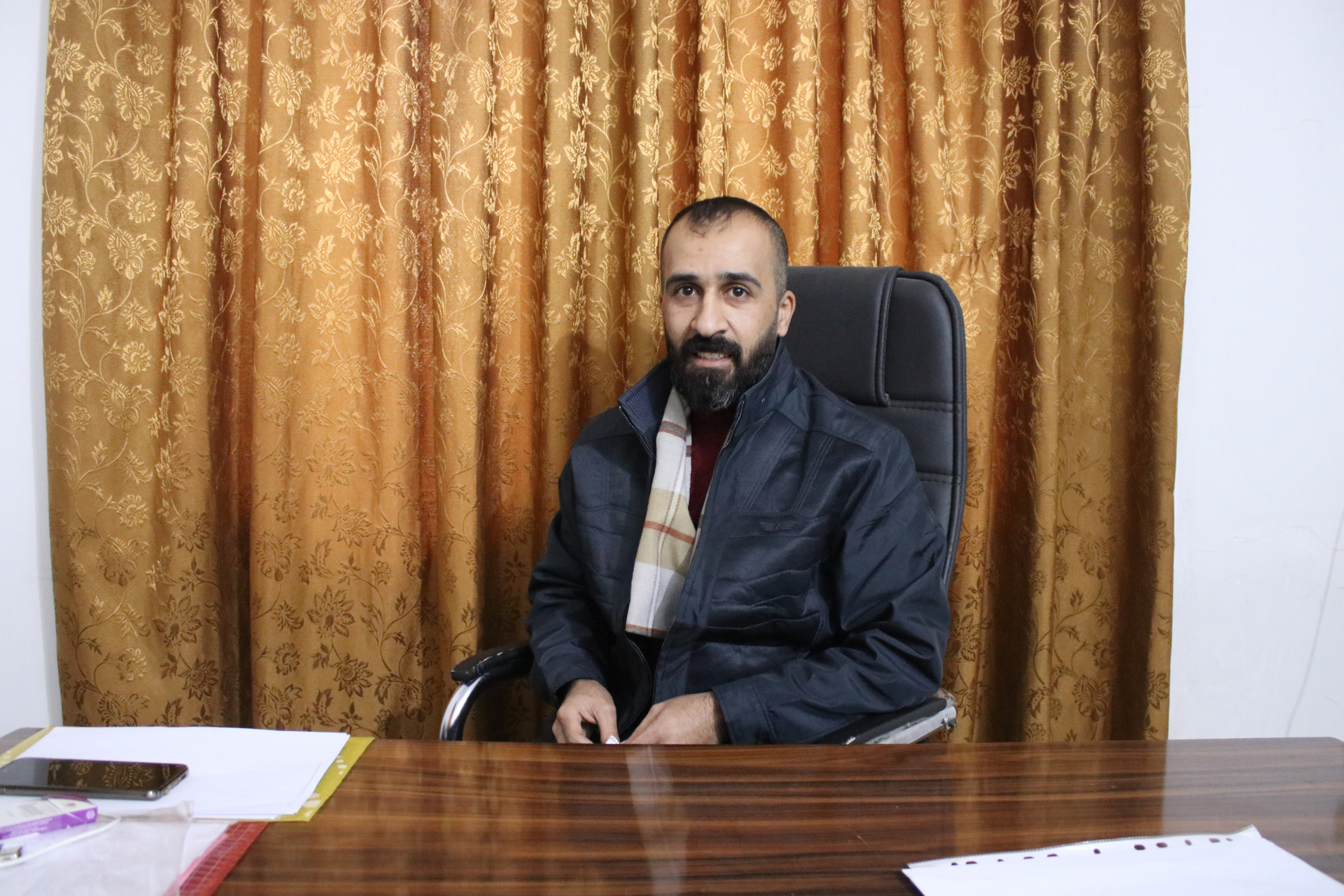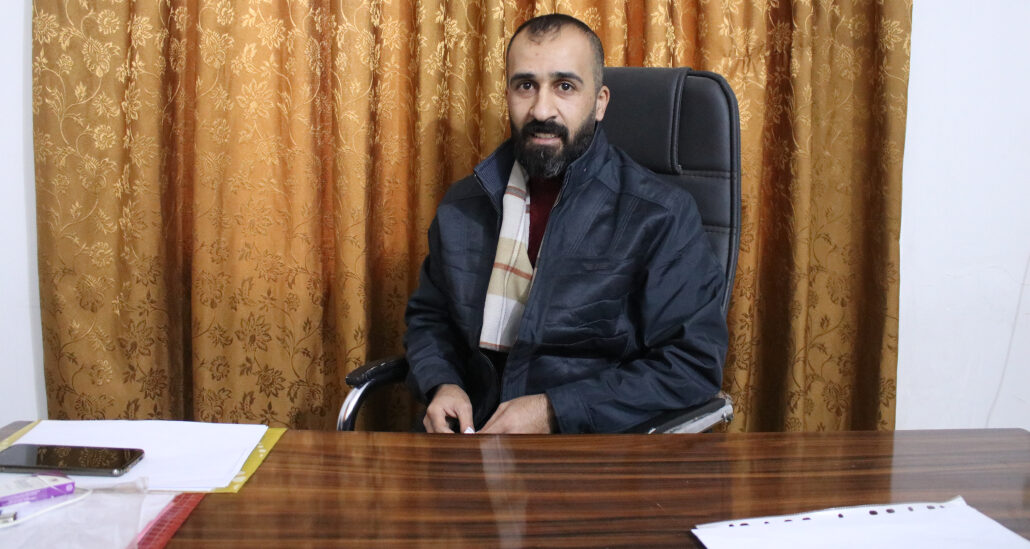In December 2023, RIC interviewed Vision, a heritage and conservation NGO in Raqqa; a city whose rich cultural heritage was heavily destroyed by ISIS during the time of the so-called Caliphate. Vision coordinator, Ezzat Suleiman al-Mouh, describes Vision’s efforts to both preserve historical artefacts and sites in Raqqa, as well as encourage interest and further education in archaeology amongst the population.
RIC: What is the background of Vision?
Ezzat: Vision was founded in 2017 and obtained its license in January 2018 from DAANES’ Office of Humanitarian Affairs. In the beginning, the aim was to conserve material and immaterial heritage and culture in general.
Vision is divided into two teams: one of them is concerned with administrative affairs such as administering the programs, projects, HR and so on. The other team consists of graduates who are specialized in the field of heritage conservation.
The message and the goal of Vision is to conserve archaeological sites, as well as immaterial parts of history, such as culture, through documenting the disappearance of stolen artefacts or conducting studies. This work is conducted by trained experts.

We have implemented several projects to conserve heritage. The first one was in 2018, restoring around 80% of the local museum [in Raqqa]. In 2019, we finished the museum’s rehabilitation, monetarily supported by ALF, a French organization specialized in conserving heritage in conflict zones. In 2020, we completed a project to rehabilitate the Raqqa museum. The museum is of great importance to the local people. We also worked on research papers, trained 10 men and 10 women about the tools and the roles of civil society in the region and how to conduct research. We wrote one paper named “Raqqa’s Vanished Antiquities”. Another piece of cultural research was named “The Forgotten Identity”. Moreover, we provided first aid training to 22 civil engineers, architects and people who study history. We also rehabilitated the minarets of a big mosque. In 2022, we purchased a 3D printer to reproduce copies of stolen artefacts. Many artefacts were stolen in 2013 [by ISIS]. We produce the copies through descriptions and the age the item roughly has. This work is monetarily supported by Impact. The idea for the project came through an exhibition in NES that shed light on the stolen pieces and we sent a picture of them to the International Criminal Court in Geneva. We called the project “The Returning of Looted Civilization” .
We have implemented a cultural project named, “The Culture of a City Lives After the War”, which has so far seen 100 people – both women and men – trained on the topics of poetry, theater, plastic art and more. Another project we have been engaged in is the conserving of songs from Raqqa. There used to be a cultural center in Raqqa, but sadly it ceased to exist. Through a donation campaign we managed to reopen it and provide 500-600 books.
The last project we want to talk about also took place in the Raqqa Museum. We helped to renovate the storage spaces for antiques, installed surveillance cameras and provided shelves and specially designed boxes. We also worked on the digital and paper archiving of all artefacts. This project was also supported by ALF.
RIC: It seems like your biggest focus is on conservation of cultural places and historical materials. Could you talk a bit more about your aims?
Ezzat: Aims in NES are common: different organizations have taken on different fields of work, such as health, education or building up peace committees in society. We work in the heritage and conservation field.
As Vision, we coordinate with the [Raqqa Council] Committee of Culture and Antiquities. A memorandum of understanding was signed between both parties and there is a supervision on the work which Vision is conducting. We coordinate with the DAANES before we implement any projects.
For the projects, funding is an essential pillar. Our projects are sadly not that cheap: for example if we were to restore Raqqa’s [historical city] wall we would need a lot of money. We have several experts both within Vision as well as in the Committee of Culture and Antiquities of the DAANES. They design our projects and are very creative in finding ways to implement them.
Yet, taking Raqqa’s wall as an example again, to restore it we would need to address the humidity. We have conducted several studies, we have a repertoire of projects we would like to work on and we have people in our team with the expertise to realize these projects. Yet, we cannot proceed without funding. This is our biggest obstacle.
A second example is the old mosque of Raqqa. We have completed different studies in collaboration with the Committee of Culture and Antiquities in 2019 and 2020. But, we haven’t found a potential sponsor yet. We receive funding of course, but it is only a small amount compared to what we see necessary. A grant of $5000-6000 is not enough to operate and work in our field.

Raqqa’s wall may not survive another year. It has been used as a militarized corridor during ISIS’ control of the region. Nowadays, it looks more like a landfill. Children go to play there and to try and find copper. Parts of the wall have also been burned and people have dug up the ground to search it for valuables. So, what can we do? It needs an organization to take on this project, to put in the required effort. In order to secure permanent results, we need permanent funding and support.
Another project we are thinking about and working on is the integration of heritage into the education system. For example, we are proposing to pick up school children and bring them to the museum, introducing them to Vision and the museum’s work.
RIC: What are the difficulties you face?
Ezzat: There are difficulties in every aspect or let’s say in every field. As with everything, some people are interested, others are not. For example the number of attendees on the day of the inauguration [of Raqqa’s museum] reached more than 300. In general we can say that the event resonated greatly with people. The inauguration of the museum truly generated widespread media coverage. After 13 years, the museum once again was opened. For years it had been out of service and turned into a landfill site. Then, when ISIS entered the city, they looted most artefacts. Before the looting, we had 5,800 artefacts.
As I said before, we face difficulties in terms of funding. We have a team of experts and society is interested in our projects. Most organizations who send donations to NES send them for education, agriculture, water etc. There is a lack of organizations interested in funding archaeological and heritage works.
The Raqqa Civil Council cannot afford to restore the wall of Raqqa, or the al-Banat Castle, or the Gate of Baghdad, for example. Our field is expensive – to restore the Gate of Baghdad would cost roughly $20,000-25,000. Our field of work is difficult; it’s not always clear what we will discover. For Raqqa’s museum, we took a lot of time to restore the outer wall. Precision is very important, as UNESCO can sue you and accuse you of altering the places. The project took us a long time, but we succeeded in restoring it without altering the place – for example, without damaging the 37 wooden windows. Abu Athar [a Raqqa Council Culture and Antiquities advisor] and Mr. Zerdesht [head of Raqqa Council’s Committee of Culture and Antiquities] were supervising our work.

Before the war, a big part of our work was in the field of conservation. In this field, we are very dependent on external agents. All fieldwork was led by foreign – mostly European – universities. This contradicts our aim to be strengthening local agents and believing that research and heritage management should be led by local populations.
How have we inverted this dynamic of reliance on external intervention, to build something more local? Things like coordinating with the outside world while strengthening local structures and communities with archaeological work.
As I explained before, the work of any organization, institution or association is dependent on its funding. My work is voluntary, but it is not enough – we need materials and tools for restoration work.
We are working on the museum of Gabbar at the moment. We have 3D printers, and our plan is to reproduce and remake the artefacts which once belonged to the museum. So far, we have completed two exhibition rooms. Moreover, we are working on a project which will involve 12 schools. With the students we are planning different excursions, for example taking them to the museum, letting experts from Vision explain the restoration and rehabilitation processes and some night time activities. Ibraheem al-Khalil, a novelist, and Ali Khadro can also share a lot of stories from the city and its people. We are also working on a theatre performance that will shed some light on the stolen artefacts, explaining their history, why they were stolen and by who. This will be an easy project to implement; one that can be done without much money.
The idea behind this is also to further the interest of students regarding historical places. It is one of our aims to raise awareness amongst the people; an aim we share with Raqqa’s Committee of Culture and Antiquities. We installed banners in archaeological sites, in addition to distributing brochures in coordination with Raqqa’s Civil Council.
Awareness raising is a big pillar of our work: we hold regular events, activities and projects for this purpose, often in collaboration with Raqqa’s Civil Council and Committee of Culture and Antiquities. For this purpose we also organized a meeting between intellectuals and the Raqqa Civil Council. These projects are creative ways to further our work in times in which we do not have good access to funding.
As Syrians who work in the heritage and conservation field, we would like to shed light on the fact that we receive very little funding. We are grateful for the funding we do receive here in NES yet, an increased interest in the archaeological and heritage field is needed to protect local history and artefacts.


